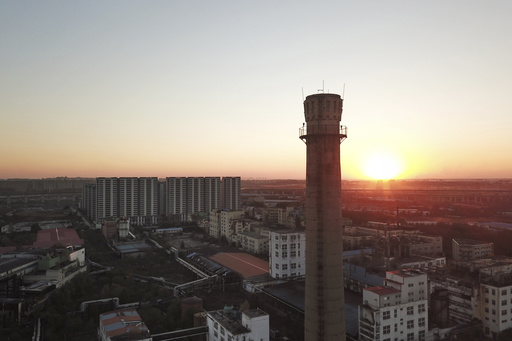
CHANGCHUN, China — As one crawls through a narrow metal door and down a dim corridor, the heavy, pulsating beats of techno music come to life, signaling the start of an underground rave. Inside an abandoned air raid shelter, young Chinese revelers gather, drinks in hand and cigarettes in tow, immersed in the vibrant red glow of neon lights while slogans from Chairman Mao flash on a large screen. This is a view into an underground electronic music scene in China, where subcultures are forming in the shadows of tightening political and cultural constraints in urban areas.
These rave gatherings, commonly referred to as “ye di” or “wild dances,” provide a distinct escape for the youth. They not only allow attendees to indulge in unrestrained enjoyment, but also serve as a subtle defiance against the rigid paths society envisions for them. Take Xing Long, for example—a 31-year-old DJ and rave organizer by passion, who spends his days working at a state-owned enterprise in Changchun. The contrast between his mundane office tasks and the thrilling nocturnal rave scene invigorates him and provides a relief from the banality of corporate life. “Going to work feels like executing a prewritten program,” he explains, emphasizing the disconnect from his personal fulfillment at work.
Young individuals in China grapple with immense pressure and elevated expectations. The prevalent economic challenges have given rise to expressions of frustration and despair, often encapsulated in viral slang phrases: “996” describes the arduous work hours many endure, “involution” reflects the stagnant competition faced by new graduates, and “lying flat” signifies a movement amongst youth choosing to abandon ambition and adopt a minimalist lifestyle. For enthusiasts like Xing, rave parties are a welcome reprieve from these societal demands, jolting their senses back to life.
Xing’s connection with techno began upon watching a documentary produced by Vice, where the music resonated deeply with him. After being exposed to the rave culture in Shenzhen, he returned to his hometown in 2021, determined to bring a similar scene to Changchun. “I had been to raves before, and I wanted to create this space for myself and others,” he notes, showcasing his passion for fostering an underground techno scene that embraces imperfection and authenticity. “It’s not a polished product made to cater to mainstream tastes.”
Unfortunately, as censorship tightens in China, creativity and cultural expression have taken a hit—concerts and performances have been restricted, independent bookstores are disappearing, and state media perpetuates bland narratives. Yet with raves, this cultural repression is challenged; these events thrive in the hidden spaces of society, often evading governmental oversight. Feng Zhe, a 27-year-old rave organizer from Shenyang, articulates the essence of this underground movement as a refusal to conform to societal expectations. “An underground culture doesn’t conform; it’s about breaking free,” he asserts.
While many rave organizers emphasize enjoyment and communal experiences, the harsh realities of organizing such events remain persistent. Loong Wu, a 26-year-old art student, initiated rave organizing as a remedy for boredom amid lockdowns. “I just wanted an outlet to enjoy and connect; thinking too deep takes away from the fun,” she explains. On a recent Saturday night, an eclectic mix of participants—including bureaucrats, students, and artists—gathered at one of Xing’s raves, dancing to the industrial techno beats delivered by local talent.
For some like Du Jizhe, a part-time DJ who also works in human resources, techno music carries memories of his upbringing in an industrial city. He draws parallels between techno and the sounds of factories, creating a nostalgic link between the music and their environment. Guests at the rave, including Chen Xiangyu, a stylish fashion student, relish the liberating nature of these gatherings. “In this place, I am free to express myself without judgment—it’s a true relief,” she remarks, highlighting the communal acceptance that raves foster.
While illegal substances are infrequently encountered at these gatherings, organizers still navigate risks from the authorities who remain wary of unregulated social events. Invitations to the raves are often cryptic, featuring minimal details to obfuscate their true nature. Some gatherings even require attendees to disguise their phones to ensure privacy, while Wu’s organizing criteria focus on avoiding security cameras and nearby residents’ sight. She recalls a prior attempt at a public union, where she transported her DJ gear on a cart, accompanying revelers through the streets in search of freedom from restrictions.
“Even with challenges, our need for community and expression drives us to carve out these spaces. ‘Wild dances’ are essential,” Wu concludes, capturing the essence of an underground culture determined to flourish despite external constraints.
